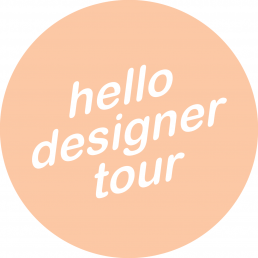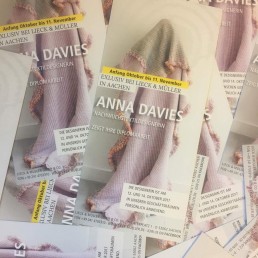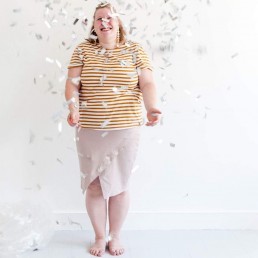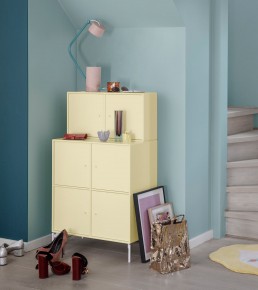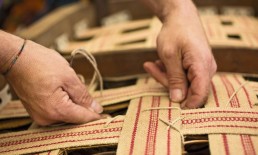What is Lieck & Müller?– Interview with Günter Corsten
This year Lieck & Müller has its 35th anniversary, and we have always been an owner-run company. Back then I bought the brand name and I’ve run it ever since.
Essentially we started off as a team of interior decorators, and soon Mrs. Blank, an interior architect, joined the team. We have always put our focus on good handcraft and individual solutions for the people coming into our store. Back when we started our focus was on textiles and it it still is today. Individual manufacturing and advice. For us the customer is the center of advice, not just here in our store, but mostly on site. There has hardly ever been a sale where we haven’t visited the customer in his or her apartment. We feel that it’s very important to match our ideas and the ideas of the customer with what’s already there, sofas, dinner table, accessories, textiles and the like. Most of it happens on site, so we’re on the road a lot.
What motivated you to participate in hello designer tour?
We have our 35th anniversary this october, and the hello designer tour came in at the perfect time. Textiles are our main focus, so it’s a good opportunity to give a young talented textiles designer a chance to present her work.
So you work quite closely with your customers?
Our store is our showroom. The customer walks in and we talk about his or her wishes and concerns and we do a preselection together. Sometimes when we visit the customer at home, I walk in and look around and nothing fits and i say “no”: we just start all over again and I do a new pre-selection.
It is not always the case, but once in a while a customer walks out with something completely different than he originally had in mind.
How did you happen to become the owner of Lieck & Müller?
Back then I worked in my parents’ company. In 1972 I finished learning the upholstery trade, and since then I have been standing on my own feet. My parents basically ran a textiles and leather upholstery shop in Horbach, a village 8 km from Aachen. And so it happened that on a trade fair in 1982 I heard rumors of Lieck & Müller going bankrupt. And I thought may-be this could become a new and wider base for our business, and in a bigger city. I contacted them, bought the company, took over on the fly with the jobs they still had open with their customers.
Has a lot changed since then?
In 1989 it became obvious that our store was becoming to small, and eventually we found a new place on Aachens Theatre Square. We had not really planned renovating it from top to floor but when took a deep look as a crafts-man I started finding small things here and there that needed to be done, and the deeper we looked the more we found. It evolved into quite a big contruction site. We worked with the architect Horst Fischer, and we got these nice high ceilings and the front front, and when you look at it today, you wouldn’t guess that everything’s almost 30 years old. Even the textiles racks are from 1989.
What makes Lieck & Müller unique?
It’s really serving our customers with a wide variety of individual solutions, lounge furniture, accessories, decoration, wardrobes, you name it. And sometimes we even ignore the producers’ specifications: If a cabinet has to be 105cm wide, but the catalogue allows only 90 or 100 cm, we make it happen anyways. And if we need the help of a locksmith, we do it, no matter if it’s a kitchen, a bathroom or a living room, we can solve most problems. Sometimes, trying to find the optimum solution for a customer keeps me busy even over the weekends.
After 35 years in the business what’s your alltime favorite story?
Imagine walking into a room and the customer asking you “What can we do with this corner over here? Do you have an idea by any chance?”. And then you actually do have an idea, but there is no way to show the piece of furniture you have in mind because it’s not in production any longer. We went to hell and back to find and old photograph of the piece, actually it was a display cabinet. It had to be this exact piece. And it took almost a year for the cabinet to finally be delivered to the customer. This was three years ago, and just recently the customer told us how happy she still is.
Are you connected to the design scene in the Euregio?
Of course Gut Rosenberg school for handcraft design in Horbach. It’s my home town and I knew the buildings when they were still a farmhouse. Once in a while their students come to us for help with their upholstery problems. And of course we always visit the exhibitions at Gut Rosenberg. Plus we watch closely what’s happening in Kortrijk every other year.
It’s our first time in hello designer tour and also our first time that we showcase a young designer in our store. We think it’s tough to market a designer’s products directly. It’s easier to give a few hints and connect a designer with a producer we know. And a young designer doesn’t want to get stuck in single piece production, and I think as a small vendor we cannot deliver the numbers a designer needs to really take off.
What is the purpose of design for you?
For me it embodies the challenge to start from a stimulus or an idea for a concept and then combine creativity with functionality and aesthetics in order to trigger emotions in an observer or user. Good design can make you feel happy, amazed, make you think or even make your life easier with the help of a high level of funtionality. Just look at Eileen Gray’s Adjustable Table: A simple form and a table with an adjustable height. But all the things you can do with it! Work with your computer on it, eat or use it as a side table next to your couch. Back then laptop computers didn’t even exist. This piece is just brilliant, unfortunately we don’t sell it, but it’s one of my all-time favorites. Just like the Wagenfeld lamp you can combine it with any interior.
What are your favorite places in the Euregio?
The Aachen Cathedral or “Aachener Dom” in German. It’s just a great structure, and every time I visit it I am spellbound by its magnificence. A place to sit down and relax. Maastricht is also very pretty, unfortunately Aachen does not have the same flair. And I love my workshop, to the horrors of my partner (laughs).
Is the Euregio a significant location factor for you?
The city of Aachen has been struggling for a long time to make Aachen what it could really be: a truly euregional city, especially for the retail industry. We have very few customers from the Netherlands, well, a few more in Belgium, and actually we have more customers in Brussels than in the Euregio. I don’t know why, but is there still is a border.
Do you have ideas how to improve this?
The mayors of the cities probably collaborate on many projects but we hear less and less. There should be put more effort into connecting people, definitely.
